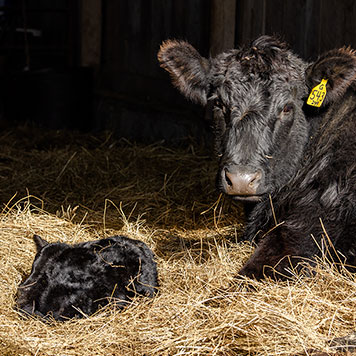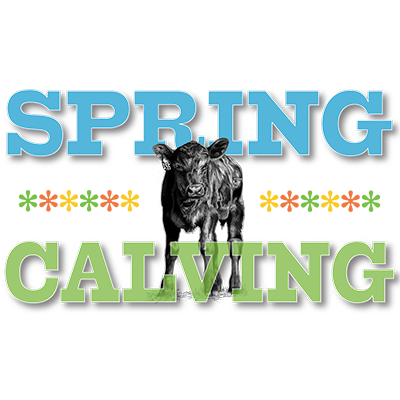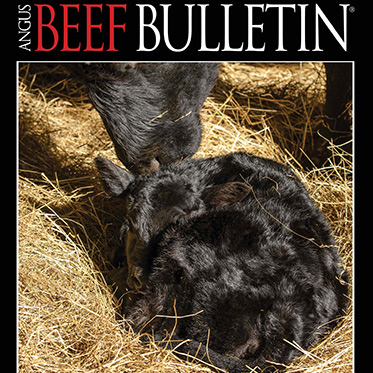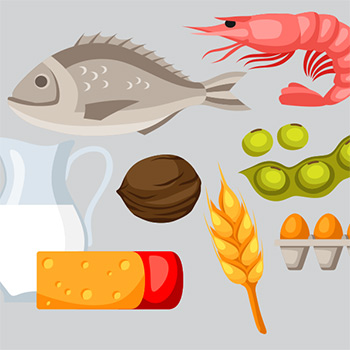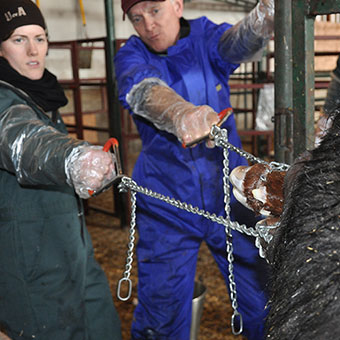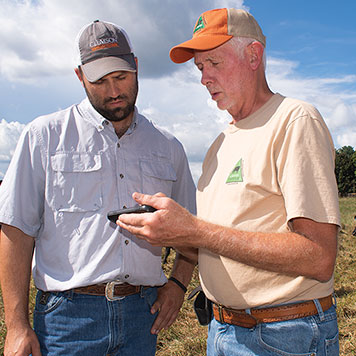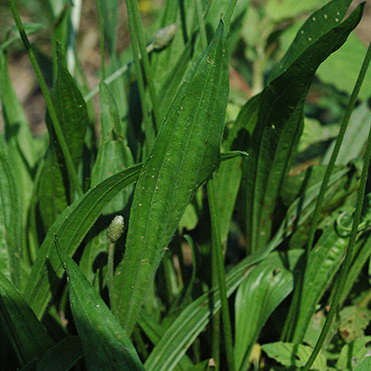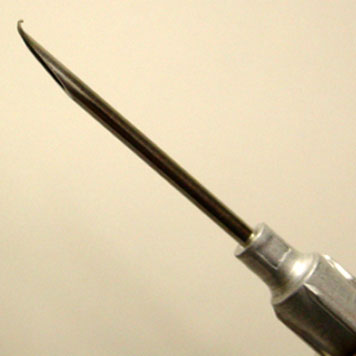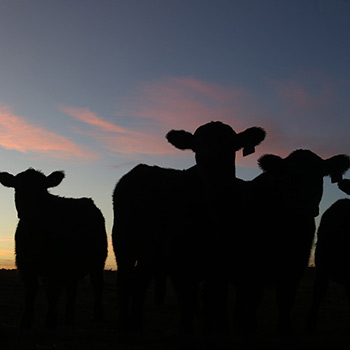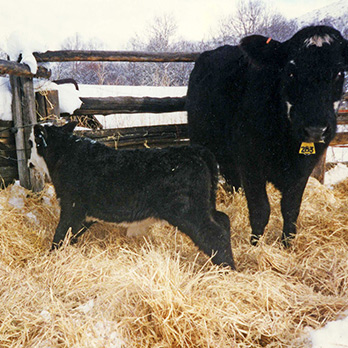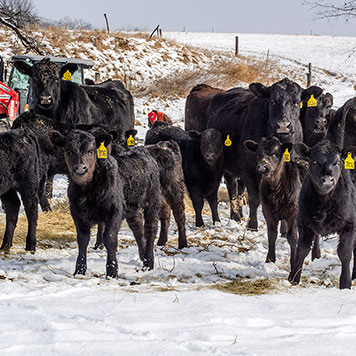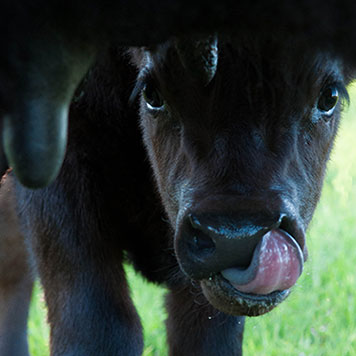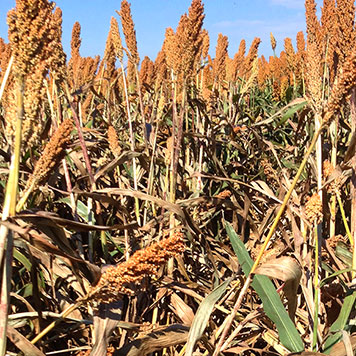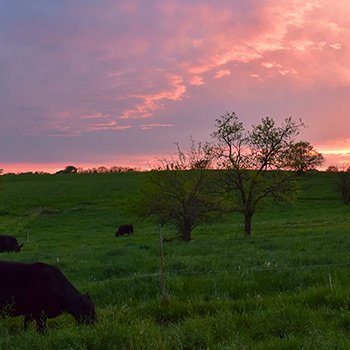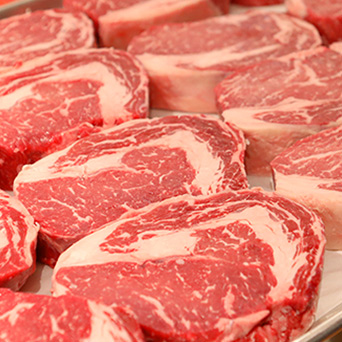Gizmos & Gadgets
Technologies demonstrated at NCBA Trade Show.
Broadleaf weed control awaits EPA registration
Corteva Agriscience, the ag division of DowDuPont, unveiled DuraCor™ herbicide as its newest anticipated broadleaf weed-control product for pastures and rangeland. Pending EPA registration, the product would be the first new active ingredient for pastures and rangelands in nearly 15 years.
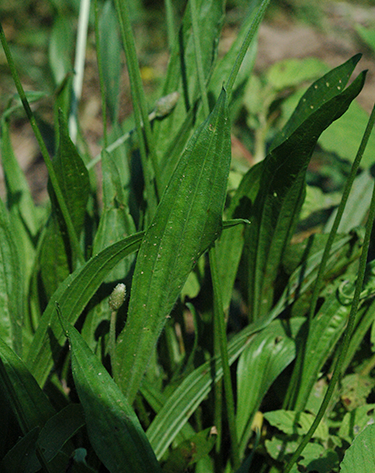 |
Multiple years of testing show improved control of important broadleaf species, including wild carrot, giant hogweed, wild parsnip, poison hemlock and common caraway, plus better late-season control of marsh elder and tall ironweed. Research has also shown it to provide “exceptional” control of plantain like the buckhorn plantain pictured above. |
DuraCor will provide cattle producers a broader-spectrum weed-control product than current market standards. Powered by RinskorTM active, recipient of the 2018 Presidential Green Chemistry Challenge Award, it is expected to control more than 140 broadleaf weed species and offer benefits including low use rate, compatibility with dry and liquid fertilizer, low-odor formulation, safe to desirable forage grasses and season-long residual control.
“The ability to simplify pasture weed control saves time and expense,” says Damon Palmer, pasture and land management leader at Corteva Agriscience. “When you factor in a doubling — at minimum — of forage production you get by eliminating weeds, the return on investment is impressive. That’s critical to sustainable beef production.”
Multiple years of testing show improved control of important broadleaf species, including wild carrot, giant hogweed, wild parsnip, poison hemlock and common caraway, plus better late-season control of marsh elder and tall ironweed. Research has also shown it to provide “exceptional” control of plantain.
For more information visit http://bit.ly/April-G1.
A nutrition optimizer for beef
Kent Nutrition Group (KNG) introduces NutriVantage® Nutrition Optimizer®. The line of supplements for beef cattle is a research-driven, unique blend of natural ingredients, vitamins and minerals that affect cattle performance at every stage.
“Dry-matter intake (DMI) is a critical factor for cattle performance, particularly for receiving cattle, and is important to help maintain cattle health,” said Brandon Koch, KNG beef nutritionist. “Our research and field trials have found that incorporating our NutriVantage for beef into diets can result in up to a 10% increase in DMI. These results have also been seen during times of heat and humidity, when cattle typically reduce their level of intake or even go off feed.”
The beef formulas are made with exclusive nutritional components, including organic macromolecules, trace minerals, antioxidants and chelating agents that provide optimal nutritional supplementation to the animal’s digestive tract. NutriVantage for beef is available as a feed supplement and in select products featuring the product logo.
For more information visit http://bit.ly/April-G5.
Cow monitoring system
Imagine going on vacation to someplace that doesn’t have snow or mud and getting an alert on your phone that your daughter’s favorite cow came back in heat and needs to be bred. Imagine being able to call your AI technician and telling him or her that cow 611 needs to be artificially inseminated at 9 a.m. Imagine getting an alert at 2 a.m. three nights in a row of unusual activity from the calving pasture, making you aware a predator has been stirring up the herd during the night.
From signaling estrous on an individual to learning about herd activity and what it means to your herd’s performance, Allflex’s SenseHubTM Beef cow-monitoring solution offers a host of opportunities. The system combines a data server, remote sensors, relay antennas and eSense™ Flex ear tags to monitor the activity of the cows in your herd and to provide actionable information to your computer or phone on the reproduction, health and well-being of those animals in real time.
Used as an indicator of estrous activity, the system has resulted in a 9%-11% improvement in first-service conception for better managers, said Scott Holt, North American marketing manager. The system can also identify animals that are getting sick before they show symptoms.
The tags are reusable and last for three years, meaning a rancher who wanted to use them to monitor estrus in a spring-calving herd and a fall-calving herd could cut the tags out and reapply them.
For more information visit http://bit.ly/April-G4.
Test success of deworming
Safe-Guard® is far from a new product, but as part of Merck Animal Health’s product education program, Harold Newcomb, technical services veterinarian, was encouraging cattlemen to conduct a Fecal Egg Count Reduction Test (FECRT) to evaluate the efficacy of their deworming program.
In a nutshell, testing involves collecting fecal samples from 20 random animals in a group on the day you treat them, then collecting 20 random fecal samples from the same group 14 days after treatment. If you don’t see a 90% reduction in fecal egg counts, your program is not effective and you could be contributing to parasite resistance issues, he said.
Proposed options include considering additional diagnostic investigation (discuss with your veterinarian), using an alternative treatment, using a different class of anthelmintic or combination of two compounds of different classes, and repeating the FECRT test under new treatment.
For more information visit Merck’s educational website, http://bit.ly/April-G7.
Breeding indicator
Estrotect shared details on its new breeding indicator, featuring an improved precision design that includes the patent-pending Breeding BullseyeTM to help producers know exactly when animals are ready to breed.
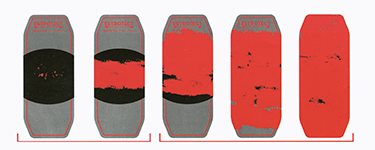 |
The patch’s silver-and-black ink surface rubs off as mounting activity occurs — a sign of cows entering estrus. When activated, the Breeding Bullseye indicates when cows are in optimal estrus to be bred. |
“We listened to our customers and leading researchers to launch a new product design that provides producers and breeding specialists with high accuracy on not only when an animal is in heat, but precisely when to breed that animal,” said Boyd Dingus, company general manager.
The patch’s silver-and-black ink surface rubs off as mounting activity occurs — a sign of cows entering estrus. When activated, the Breeding Bullseye indicates when cows are in optimal estrus to be bred.
Third-party university research has demonstrated that when the Breeding Bullseye (or equivalent amount) is rubbed off of the patch by mounting activity, the confirmed pregnancy rate for those cows was up to three times higher than those where the Breeding Bullseye was not rubbed off. The patch also indicates when an animal did not display enough estrus activity to breed with satisfactory results.
For more information visit http://bit.ly/April-G2.
High-fat block
When forages are deficient, cows need additional energy to perform and reproduce, and the form of the supplemental nutrition matters, said Ron Scott, director of cattle research for Purina Animal Nutrition. Fat is a necessary nutrient for proper nutrition and reproduction. Affecting body condition, it is a precursor to cholesterol, which signals estrogen, which plays a vital role in cow fertility and breeding soundness.
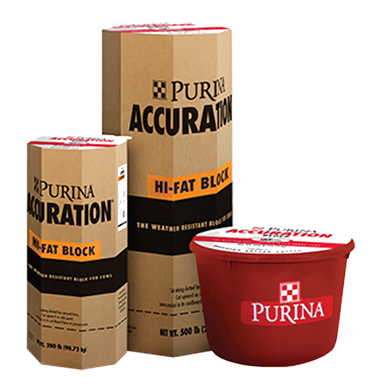 |
Available in 200-pound (lb.) and 500-lb. blocks or 200-lb. tubs, Purina® Accuration® Hi-Fat Block encourages snack eating, causing cattle to be able to eat more forage and get more out of the forage they eat. The product’s formulation ensures the fat is distributed throughout the block or tub as it hardens to ensure even distribution of nutrients. |
The company offered its Purina® Accuration® Hi-Fat Block as a self-fed, high-fat protein supplement with Intake Modifying Technology®. It delivers 10% fat and provides additional energy to help balance forage nutrient deficiencies.
Available in 200-pound (lb.) and 500-lb. blocks or 200-lb. tubs, the product encourages snack eating, causing cattle to be able to eat more forage and get more out of the forage they eat. The product’s formulation ensures the fat is distributed throughout the block or tub as it hardens to ensure even distribution of nutrients.
For more information visit http://bit.ly/April-G3.
Cattle Care365
Merck Animal Health announced its Cattle Care365® initiative to support cattle producers’ efforts to provide the best quality care for their animals. The program includes a series of employee training modules featuring industry experts, interactive quizzes, standard operating procedures (SOPs) and certificates of completion to document training.
The first educational training module focuses on beef cattle handling and processing, including preparation for processing; how to use the flight zone of cattle; handling cattle through a Bud Box, crowding tub and snake; proper use of the chute; and proper product administration. The video lessons are taught by Tom Portillo, manager of health and well-being for Friona Industries, an Amarillo-based cattle feeder.
“The processing barn is one of the most dangerous spots with workers sorting cattle and often handling veterinary-type procedures,” says Portillo. “It’s important to take time to teach crew members about their impact on Beef Quality Assurance and animal well-being, along with the crew’s importance to the operation. Implementing these practices will result in improved animal health, as well as contribute to a safer environment for both cattle and their caregivers.”
The training is offered in English and Spanish.
For more information visit http://bit.ly/April-G6.
Editor’s note: Gizmos & Gadgets is a regular column in the Angus Beef Bulletin. Subscribe at https://www.angus.org/Media/Advertising/ABBSubscr.aspx
